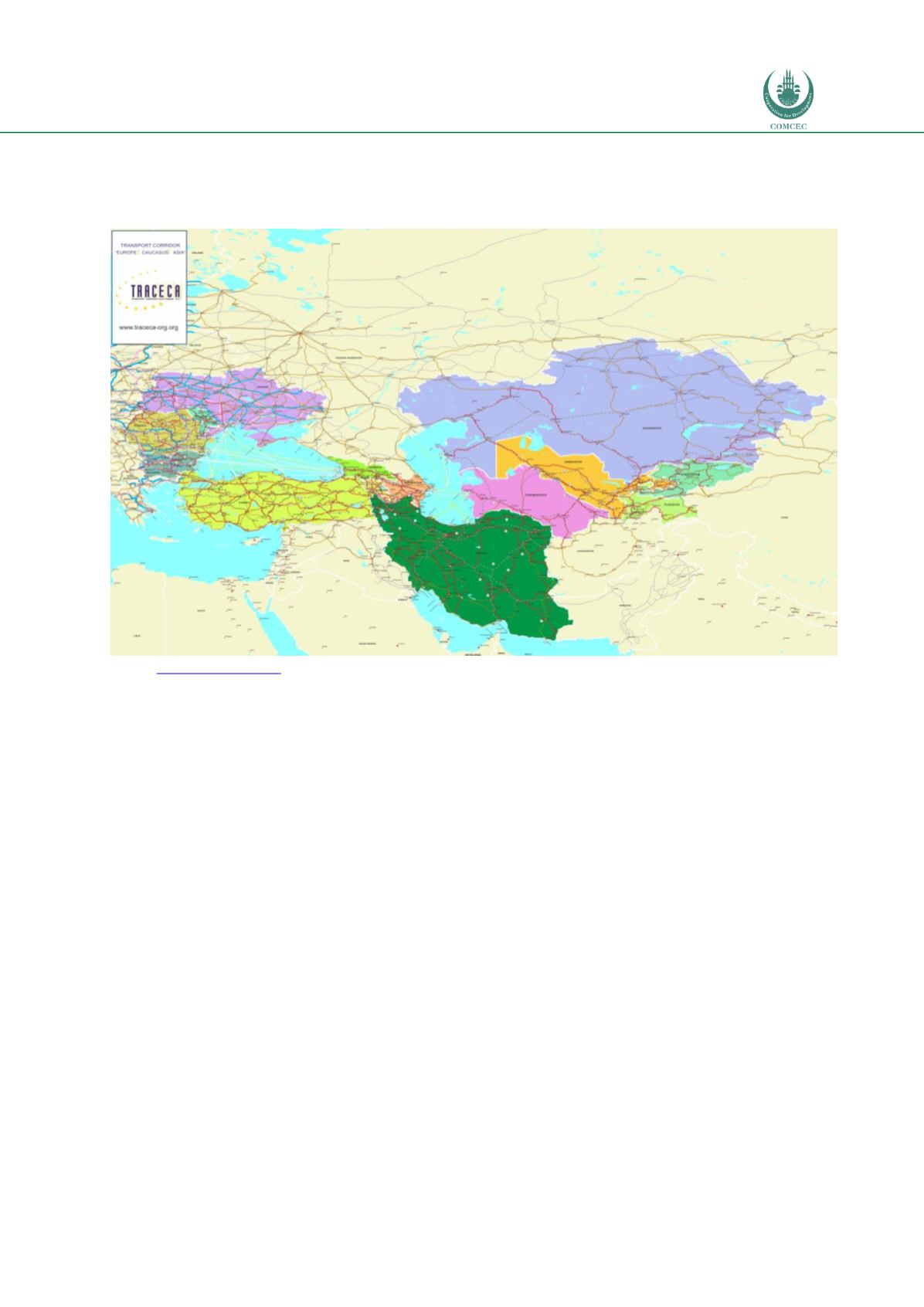

Governance of Transport Corridors in OIC Member States:
Challenges, Cases and Policy Lessons
111
development, albeit in a toned-down fashion, but nevertheless indicating that TRACECA remains an
active structure.
Figure 7.7 Geographical Scope of TRACECA and main transport routes
Source
: www.traceca-org.org .7.3.2
Corridor objectives and political support
Objectives of transport corridors and main drivers
The driving force behind the establishment of the corridor is found outside the geography of TRACECA:
the European Union. Their goal was to improve the connection of the TRACECA region on EU’s
transport network TEN-T and to support the development of newly independent states (Gorshkov &
Bagaturia, 2001). After a series of meetings between 1993 and 1998, the member states agreed upon
the following five objectives:
Giving support to political and economic sustainability of these republics by providing access to
European and world markets via alternative transport routes;
Developing economic relations, trade and transport communications in the regions of Europe,
Black Sea, the Caucasus, the Caspian Sea and Asia;
Improving access to the international market of road, air, railway and maritime transport;
Facilitating international transport of goods and passengers and international transport of
hydrocarbons;
Ensuring traffic safety, security of goods and environment protection;
Creating equal conditions of competition between different types of transport (Schoen, 2013).
Corridor Founders
In May 1993 at the conference of Brussels, TRACECA was initiated by the ministries of transport of the
following eight countries: Armenia, Azerbaijan, Georgia, Kazakhstan, Kyrgyzstan, Tajikistan,
Turkmenistan and Uzbekistan. During 1996 – 1998 Ukraine and Moldova joined, with Bulgaria,
















